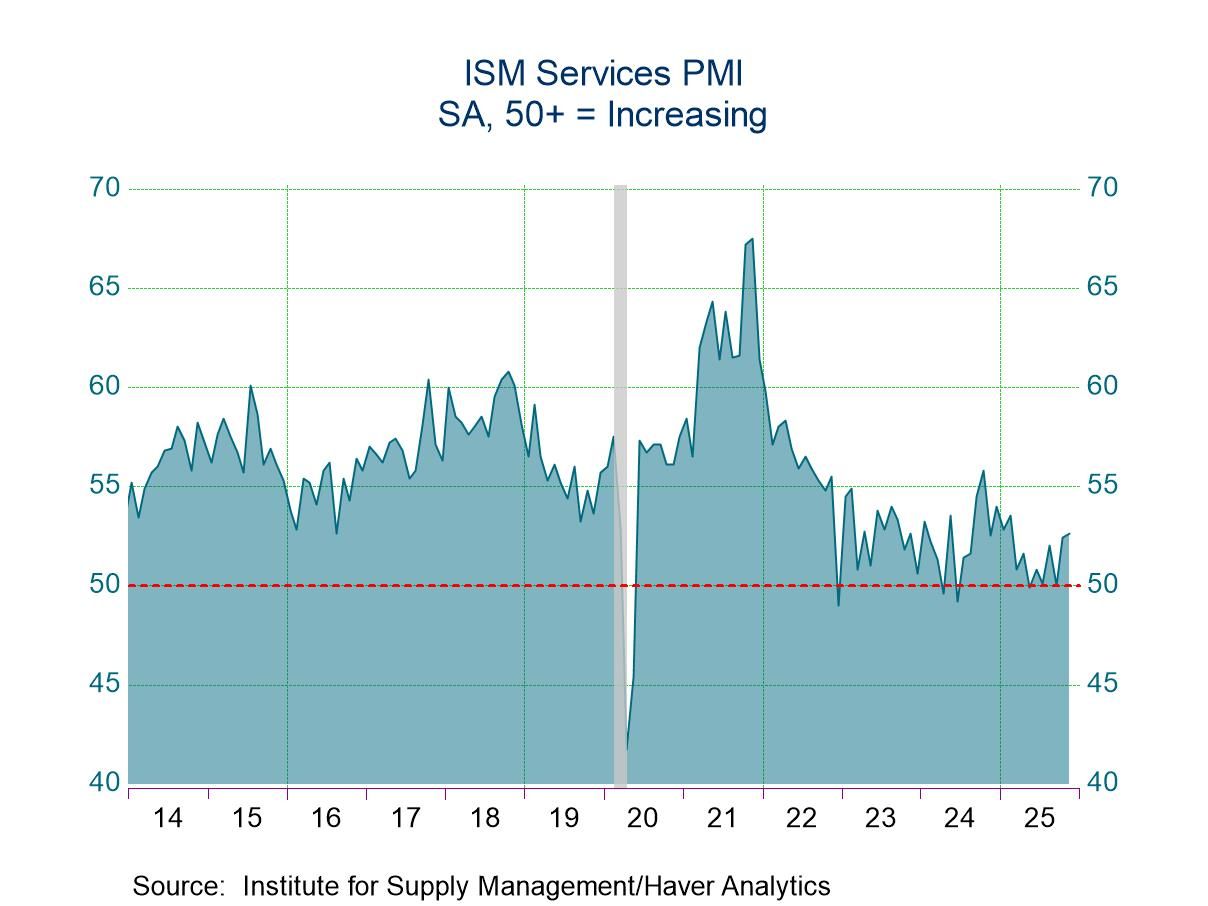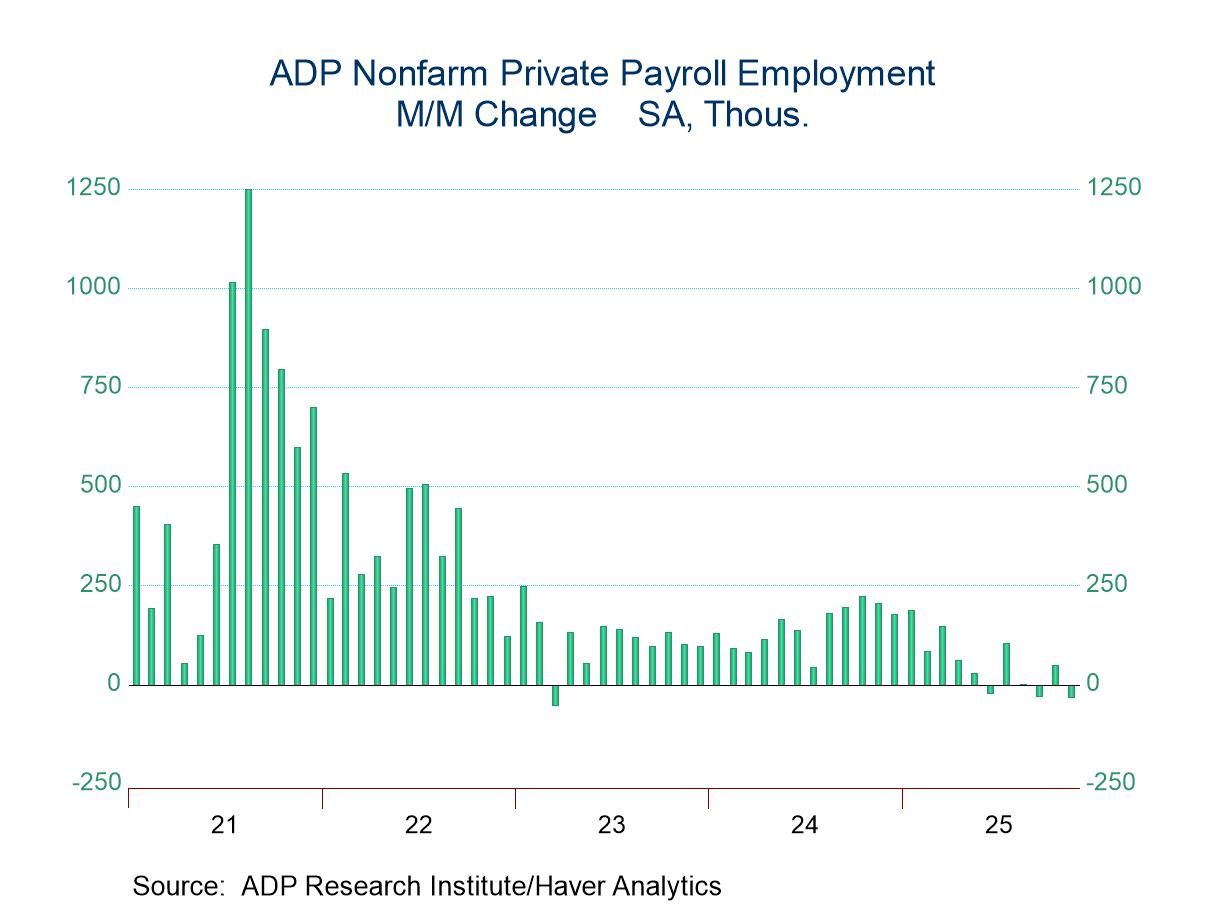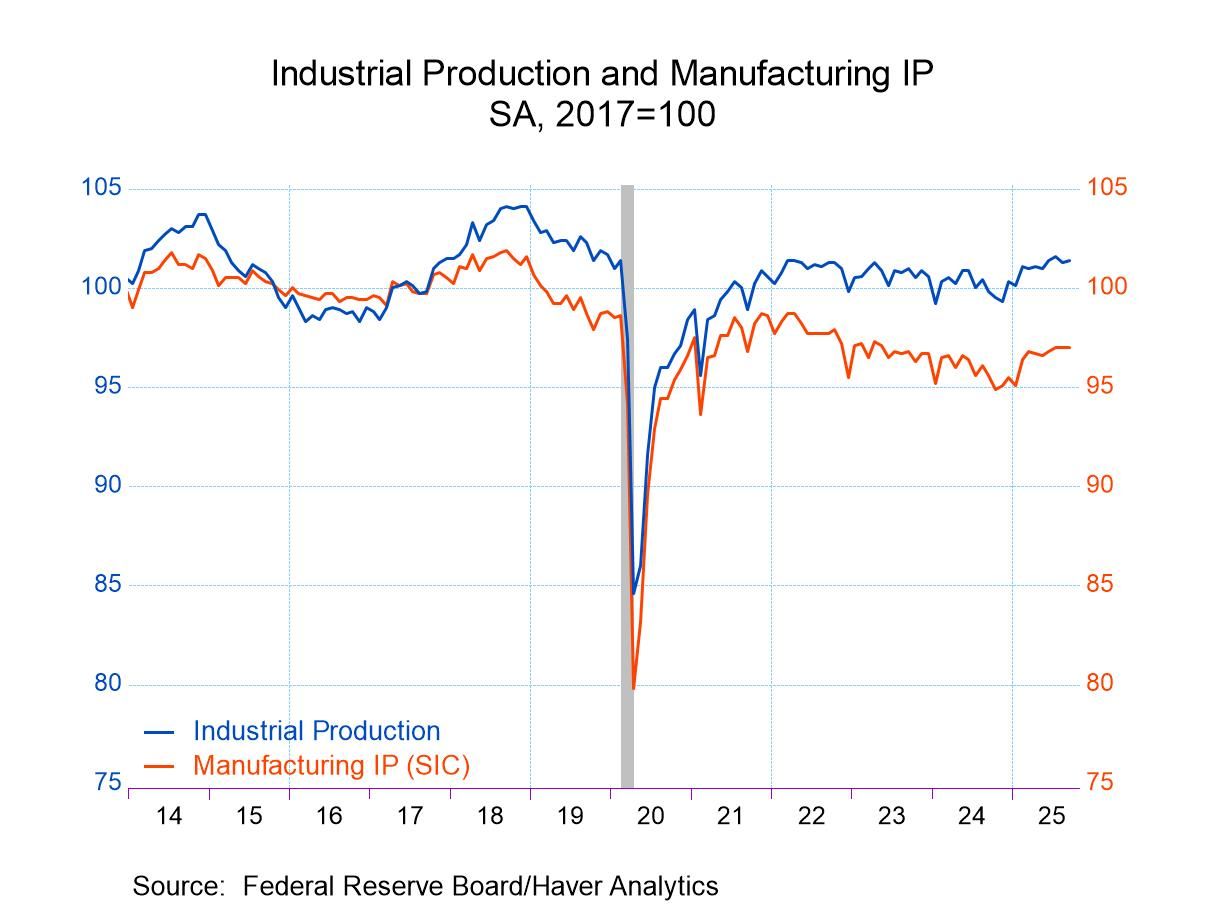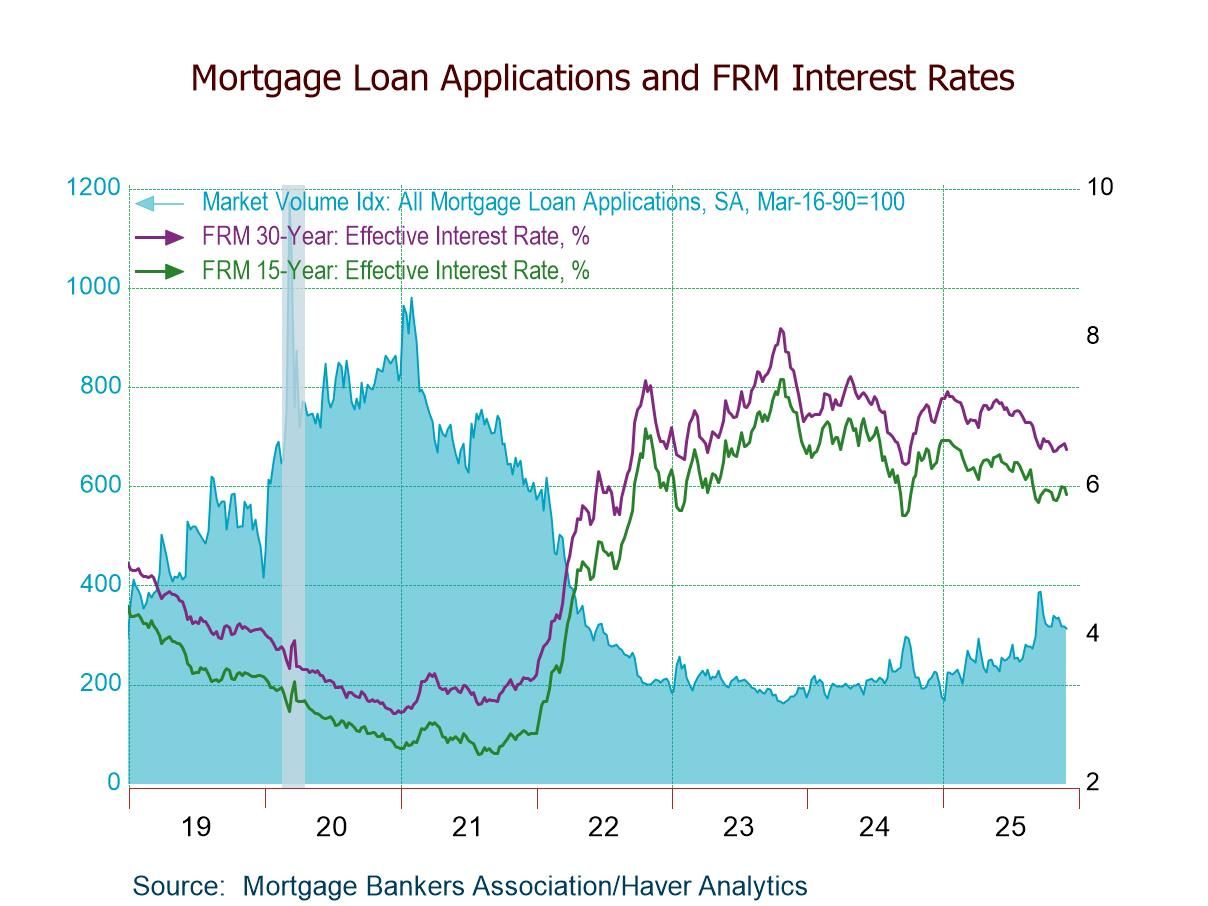FRBNY Empire State Manufacturing Index Unexpectedly Advances in August
by:Sandy Batten
|in:Economy in Brief
Summary
- The highest reading since November 2024.
- The August rise was led by stronger new orders and continued gains in shipments.
- More evidence of nascent supply-chain problems.
- Outlook six months ahead faded slightly.
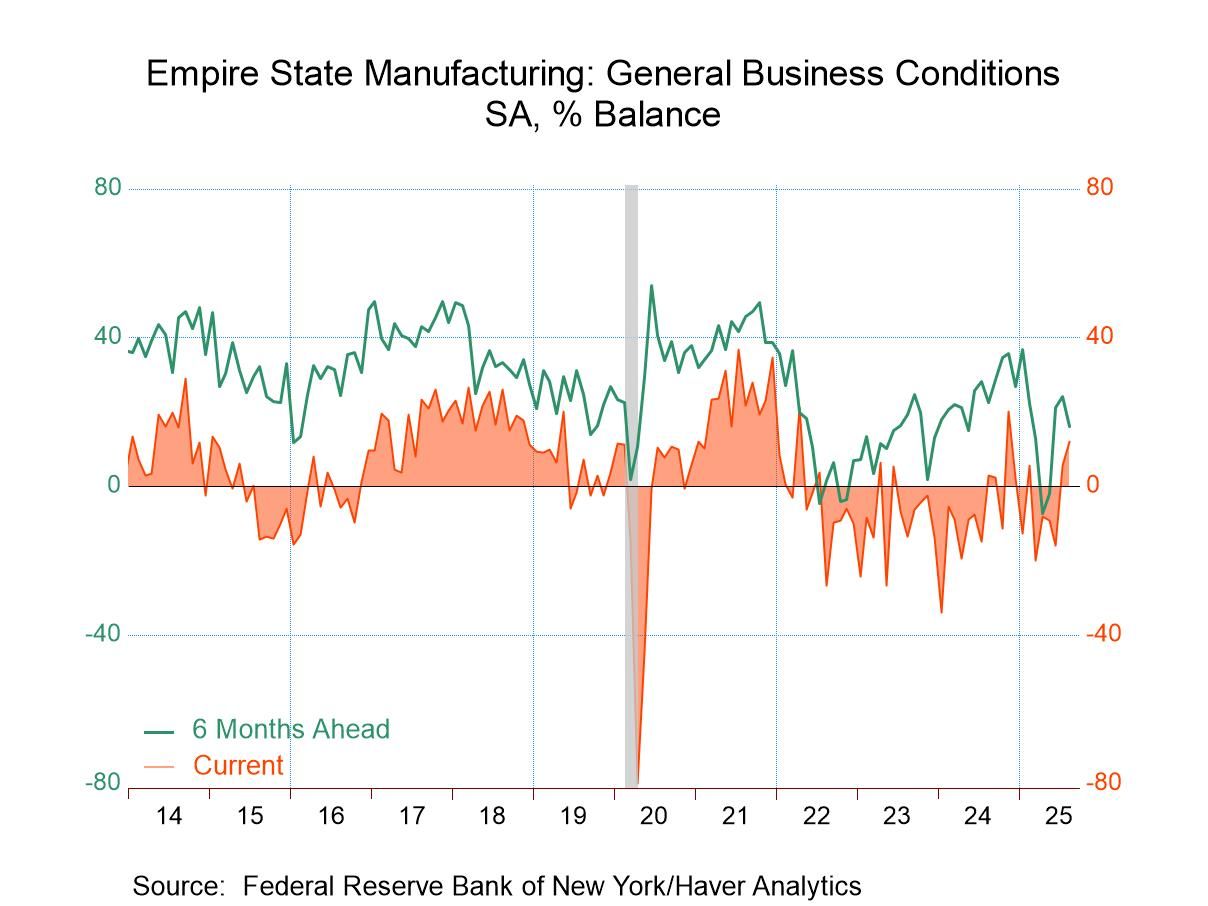
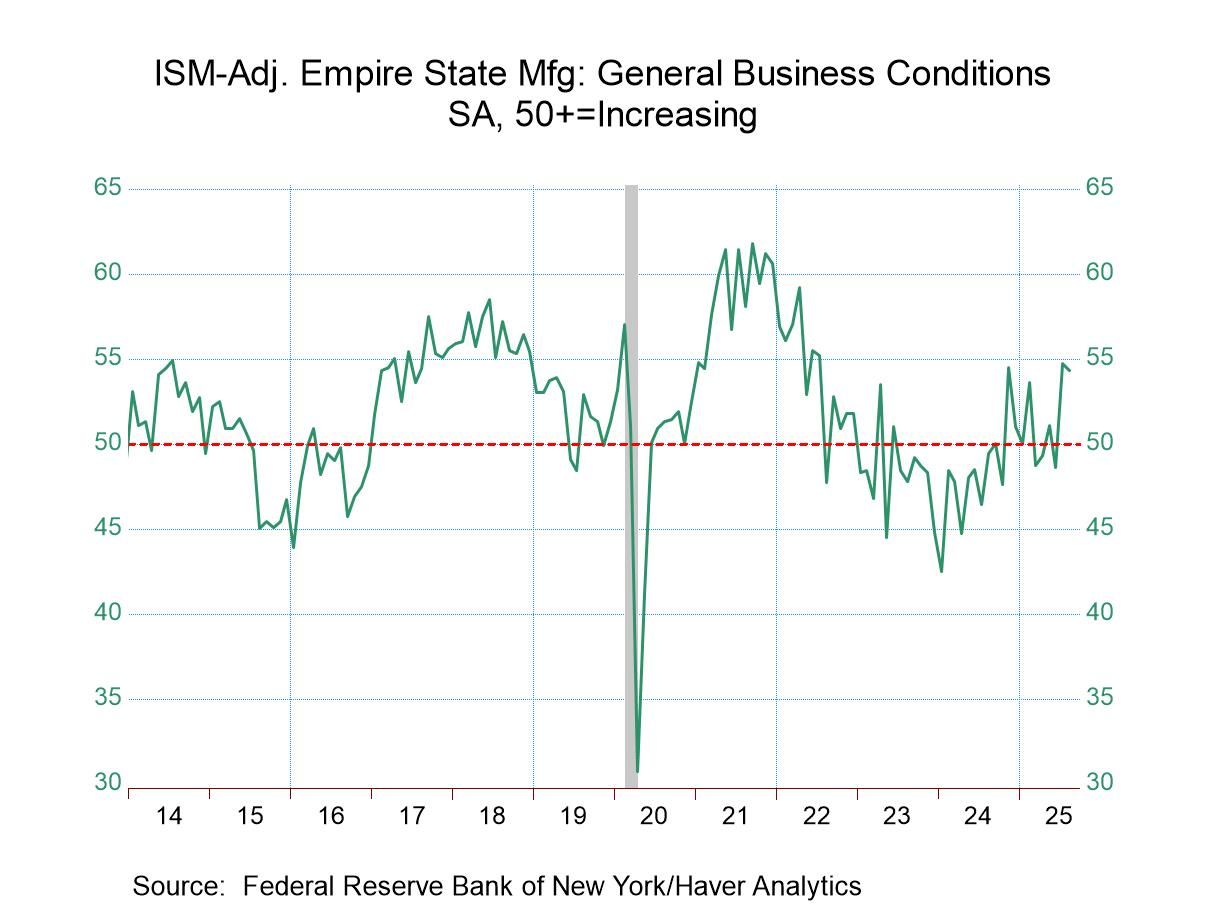
The Empire State Manufacturing Index of General Business Conditions unexpectedly advanced more than 6 points to 11.9 in August after having jumped nearly 22 points to 5.5 in July, according to the Empire State Manufacturing Survey released by the Federal Reserve Bank of New York. This is the highest reading since November 2024 and indicates a pickup in the pace of economic activity in New York State. A reading of -1.0 for August had been expected by the Action Economics Forecast Survey. The percentage of respondents reporting an increase in general business conditions rose to 34.7% in August from 32.4% in July while the percentage reporting a decrease fell to 22.8% in August, the lowest reading since February, from 26.9% in July. The August survey was conducted between August 4 and August 11.
The headline index just reflects the answer to a single question concerning the state of economic activity and is not calculated from the components. Haver Analytics calculates a composite index from the five major components, which is comparable to the ISM manufacturing index. This calculated index slipped to 54.3 in August from 54.7 in July, still well above the critical 50 level that separates expansion from contraction but indicating that the components were not quite as strong as the headline index in August. The calculated index is the average of five diffusion indexes: new orders, shipments, employment, supplier deliveries and inventories with equal weights (20% each).
The August increase was led by a more than 13-point increase in the new orders index, to 15.4 from 2.0. Thirty-six percent of respondents reported an increase in orders, up slightly from 35% in July. However, only 20.4% reported a decline in orders, down markedly from 32.9% in July and a recent high of 40.2% in March. The shipments index was little changed in August but remained at a solid 12.2. Inventories reversed course sharply, falling to -6.4, the first negative reading since last August, from 15.6 in July. Employment also slowed with the index falling to 4.4 from 9.2 in July.
Indications of supply-chain disruptions continued to emerge. Delivery times lengthened markedly with the index jumping to 17.4 in August, its highest reading since May 2022, from an already elevated 8.3 in July. Twenty percent of respondents reported an increase in delivery times, up from nearly 15% in July, while only 2.8% reported a shortening versus 6.4% in July. Moreover, the supply availability index remained in negative territory at -5.5 versus -11.0 in July.
Inflation indexes softened a bit in August but remained elevated. The prices paid index edged down to 54.1 from 56.0 in July while the prices received index slid to 22.9 from 25.7 in July. Both remain significantly elevated relative to the beginning of the year.
Firm optimism about the future (the next six months) soured a bit in August. The index for future general business conditions fell eight points to 16.0, suggesting that businesses expect activity to increase in the months ahead, but firms were less optimistic than they were last month. New orders and shipments were expected to increase. Two-thirds of respondents expect input prices to pick up further over the next six months. Of some concern, capital spending plans were soft with the expectations index plunging to -0.9 in August from 9.2 in July.
The indexes in this report are diffusion indexes and measure the percentage of respondents indicating an increase minus the percentage indicating a decrease with zero separating expansion from contraction.
The New York Fed survey data are contained in Haver’s SURVEYS database. The expectations series is in Haver’s AS1REPNA database.
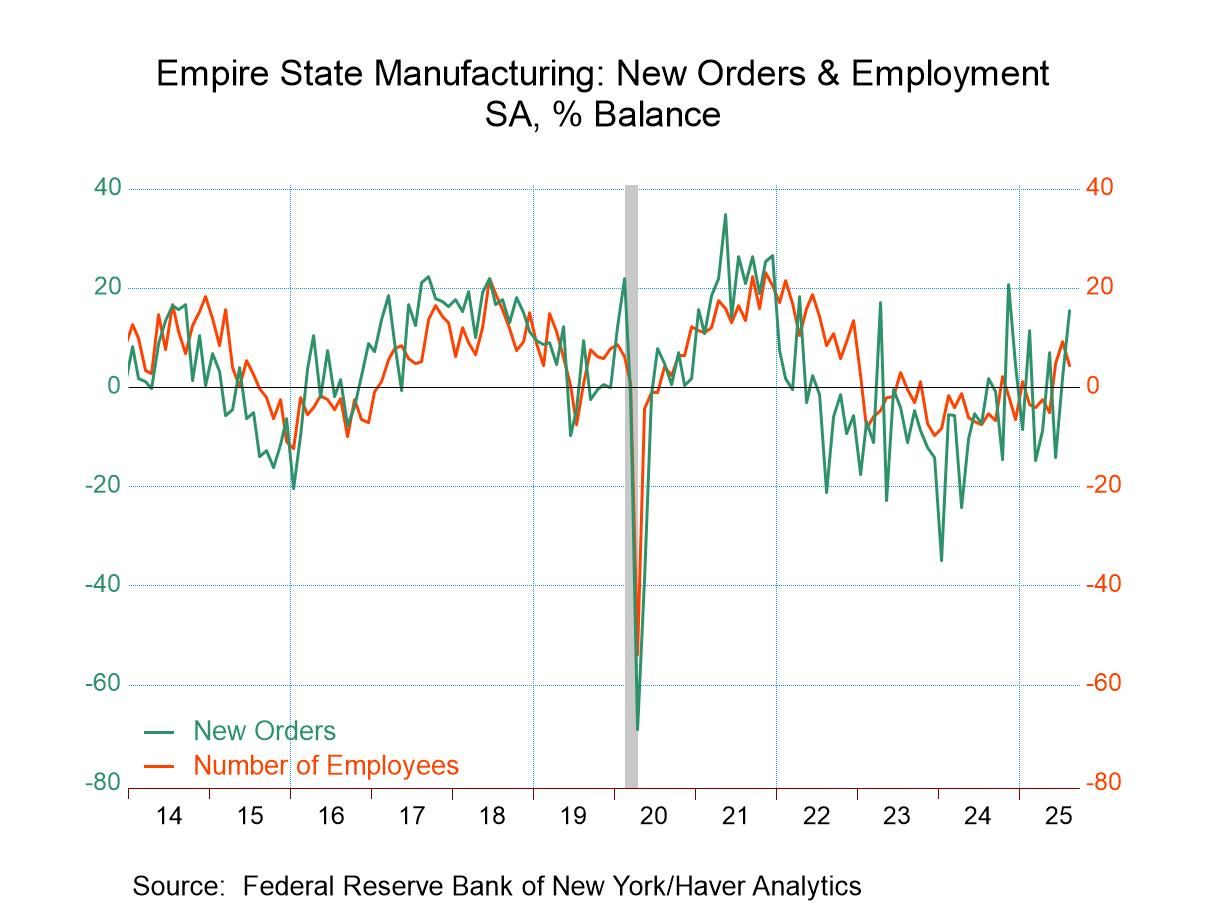
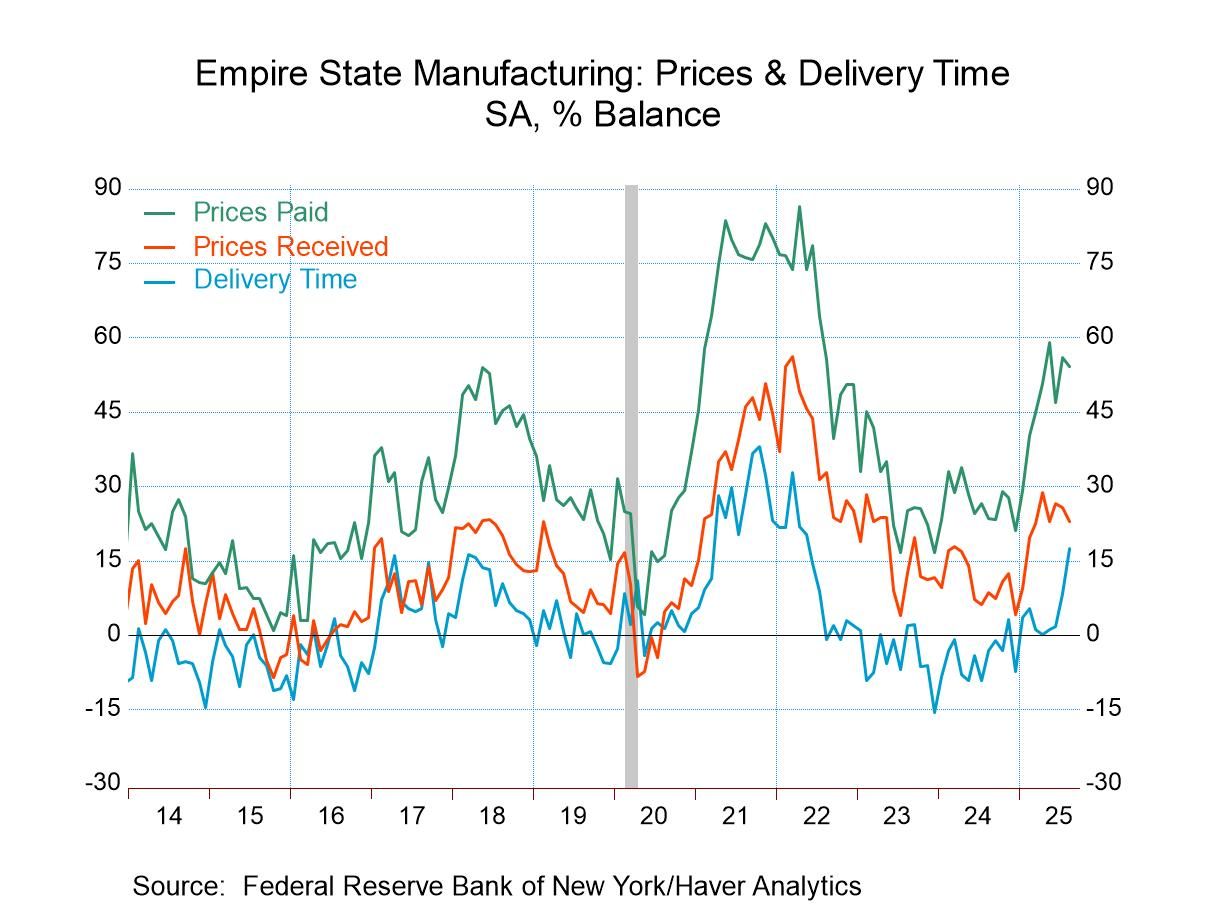
Sandy Batten
AuthorMore in Author Profile »Sandy Batten has more than 30 years of experience analyzing industrial economies and financial markets and a wide range of experience across the financial services sector, government, and academia. Before joining Haver Analytics, Sandy was a Vice President and Senior Economist at Citibank; Senior Credit Market Analyst at CDC Investment Management, Managing Director at Bear Stearns, and Executive Director at JPMorgan. In 2008, Sandy was named the most accurate US forecaster by the National Association for Business Economics. He is a member of the New York Forecasters Club, NABE, and the American Economic Association. Prior to his time in the financial services sector, Sandy was a Research Officer at the Federal Reserve Bank of St. Louis, Senior Staff Economist on the President’s Council of Economic Advisors, Deputy Assistant Secretary for Economic Policy at the US Treasury, and Economist at the International Monetary Fund. Sandy has taught economics at St. Louis University, Denison University, and Muskingun College. He has published numerous peer-reviewed articles in a wide range of academic publications. He has a B.A. in economics from the University of Richmond and a M.A. and Ph.D. in economics from The Ohio State University.



